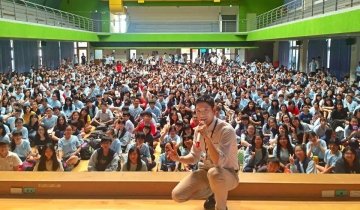Throughout the COVID-19 pandemic, school superintendents have faced numerous challenges. Superintendents have had to navigate difficult questions for which there aren’t always answers, noted State Superintendent of Public Instruction in California Tony Thurmond in the recent webinar, From Physical Plant to Mental Health: What’s the Best Use for American Rescue Plan Education Funds?
Their newest challenge is perhaps a good problem to have. The American Rescue Plan (aka the Coronavirus Relief Bill) authorized $123 billion in stimulus to be distributed to K–12 schools. Now educational leaders must determine how to best use the funds.
Moderated by USC Rossier Dean Pedro Noguera with an address by Thurmond, the webinar gathered school superintendents and education researchers throughout California to address the question of distribution.
Here are some of the ways in which superintendents are investing their stimulus funds.
Expanded mental health support
Student mental health was an issue of concern over the past few years, and it became a crisis during the pandemic. All superintendents in the webinar cited an investment in mental health services, including counseling, partnerships with vendors, crisis intervention, and expanded social-emotional learning programming.
“We’ve worked with teachers to develop all kinds of strategies and supports … so that our students’ mental health is taken care of,” said Sandra Lyon, Superintendent of Palm Springs Unified School District.
Improved infrastructure and school safety
To create a safe environment for students as they return to in-person instruction, schools are using American Rescue Plan funds to strengthen campus infrastructure. Superintendent Darin Brawley oversees the Compton Unified School District and said that his district will spend approximately $58 million on “the replacement of HVAC systems to [improve] … airflow and circulation within our classrooms.”
Thurmond also mentioned that the state is providing free rapid COVID tests to schools.
Reduction of Learning Loss
Learning loss has become a significant problem during the pandemic, with students of color falling even further behind than White students. Brawley mentioned that the Compton district will use summer school to help students catch up, while Lyon’s district has distributed thousands of hotspots to families and provides technical support, ensuring students can access instruction and stay engaged during remote learning.
Increased communication with families
One of the biggest challenges for superintendents is reassuring families about the safety of in-person learning. “There’s a huge amount of fear still out there around COVID,” said Brawley. “A lot of families within our community have been impacted.”
Investing in communication efforts can be helpful. “Our outreach has been quite extensive,” said
Roxane Fuentes, Superintendent of Berryessa Union School District. In addition to creating her own video messaging for the community, the district’s communications plan includes town halls, focus groups, phone calls and home visits.
Professional Support for Discussing Race
In the wake of the George Floyd killing and increased visibility of police violence, schools have been forced to reckon with how to approach sensitive topics and student trauma. But in many cases, teachers lack sufficient preparation when addressing these issues.
“I think [American Rescue Plan] funds are a great opportunity for us to invest in creating better materials around … racial equity and racism,” suggested Julie Marsh, Professor of Education Policy at USC Rossier. They should also be used to train educators in this area, she added.




